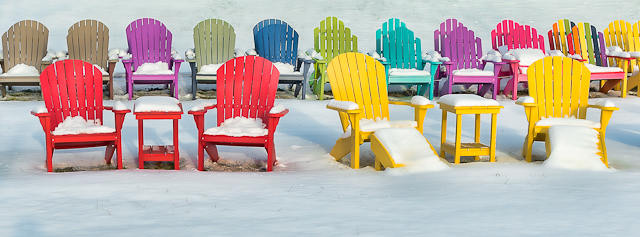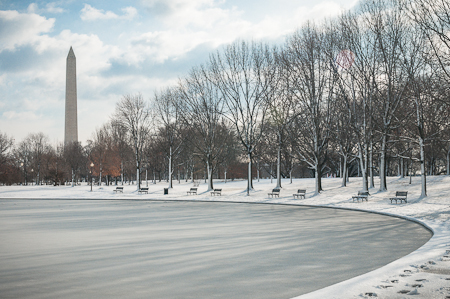Tips for Winter Camera Care
January 29, 2014 by Marie Joabar
 Cold weather shouldn’t prevent you from getting outdoors to photograph, especially if there is snow. Don’t miss taking pictures your kids sledding or building a snowman, or capturing beautiful winter scenes around the area.
Cold weather shouldn’t prevent you from getting outdoors to photograph, especially if there is snow. Don’t miss taking pictures your kids sledding or building a snowman, or capturing beautiful winter scenes around the area.
Just make sure to take some precautions to protect your camera from damage that cold weather can cause.
Condensation: When you bring your camera indoors after being out in the cold, give it time to adjust to the room temperature to prevent condensation from forming. Keep it inside a zipped camera bag for at least one half hour to an hour before removing it. (A longer period may be needed depending on the temperature difference between outside and in.)
Another option if you have been out in the cold for some time, is to put your camera and lenses in resealable plastic bags. When you enter a warm area the condensation will form on the outside of the bag, not on your equipment.
If your caught without your camera bag or baggies, at the very least, wrap your gear in a blanket prior to bringing it indoors so it’s not exposed to the warmer air while it’s still cold.
The problem is not going from a warmer climate to a colder one but the opposite, condensation is caused by going from colder to warmer.
 In the summer or when traveling to tropical locations, take precautions when taking your gear from your cold air-conditioned house or hotel room to the hot, humid outdoors. Allow it to acclimate by leaving it inside a zipped camera bag or resealable plastic bag outdoors for about 30 minutes to an hour before removing it.
In the summer or when traveling to tropical locations, take precautions when taking your gear from your cold air-conditioned house or hotel room to the hot, humid outdoors. Allow it to acclimate by leaving it inside a zipped camera bag or resealable plastic bag outdoors for about 30 minutes to an hour before removing it.
Of course we all want to see our images as soon as possible so while still in the cold, remove the memory card from the camera. This way, you’ll have access to it while your camera remains tucked in the camera bag adjusting to the temperature difference.
If condensation does form on the camera, stop using it immediately. Remove the battery, the memory card and lens cap, and keep compartment doors open until the condensation evaporates. Don’t remove the lens, leave it attached. Avoid using it again and especially don’t take it back out in the cold until all the moisture has dried as it may freeze and do irreparable damage.
 Snow/Rain: Keep a plastic bag with you or inside your camera bag. If it suddenly rains or snows while you’re out, put the bag around the camera to keep it dry. Try a product called “Rain Sleeve”. It’s designed specifically to cover an SLR camera with a telephoto lens and has a drawstring to secure it around the end of the lens. Use a lens hood to keep water or snow flakes off the front lens element so you can continue shooting.
Snow/Rain: Keep a plastic bag with you or inside your camera bag. If it suddenly rains or snows while you’re out, put the bag around the camera to keep it dry. Try a product called “Rain Sleeve”. It’s designed specifically to cover an SLR camera with a telephoto lens and has a drawstring to secure it around the end of the lens. Use a lens hood to keep water or snow flakes off the front lens element so you can continue shooting.
Battery life: Cold weather quickly drains power from the batteries so this is when it’s most important to carry a spare. Keep the spare battery in a pocket close to your body. If the battery in your camera runs low, replace it with your spare and warm up the one from the camera to get a bit more life from it.
We’ve got a lot of winter and cold weather in front of us. Grab your gear, dress warm and enjoy capturing it, just take a few steps to protect your gear when you’re done for the day.
